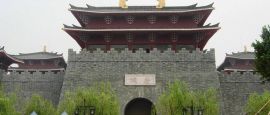Macau Food and Drink
The most tempting things to try are local Macanese specialities, along with the traditional Portuguese and Chinese dishes which contributed to it. Other Asian cuisines are also represented, however, including Japanese, Korean and Indonesian. You’ll find other European cooking too, particularly in hotels and casinos; at the higher end is Robuchon au Dome and The Eight. Both restaurants boast earning three Michelin stars and are located the Grand Lisboa hotel.
Macanese food is spicy, a unique combination of Chinese and Portuguese cooking methods with influences of Indian and African spices – the result of Portugual’s various colonial activities. Restaurants known for their Macanese dishes can be found on Rua Almirante Sérgio, in the Outer Harbour New Land Reclamation Area (NAPE) and on Taipa island.
There are also many restaurants which specialise in Chinese cooking, mostly Cantonese although other there are also places serving other regional cuisines such as spicy Szechuan. If you’re particularly interested in Chinese seafood dishes then head for the harbour area, on and around Rua do Almirante Sérgio and Rua das Lorcha. For traditional Portuguese food, try Rua do Almirante Sérgio (near the A-Ma Temple), Rua Central and Travessa de São Domingos (both in the centre). You’ll also find Portuguese restaurants on Coloane (in the village and on Hac-Sa beach) and Taipa (try Rua do Cunha).
• Bacalhau (salted cod, a Portuguese speciality which can be served in many different ways).
• Caldo verde (a Portuguese soup made from potatoes, onions and greens, with a variety of other ingredients sometimes including ham).
• Sopa a alentejana (a garlic and coriander soup with poached egg, another Portuguese dish).
• Galinha Africana (African chicken – a Macanese dish of chicken grilled and served with spicy peri peri sauce).
• Galinha a portuguesa (despite the name, this is really a Macanese dish of chicken baked with potatoes, onions and eggs in a coconut-based sauce).
• Minchi (this Macanese comfort food consists of minced meat – pork, beef or both – with fried potato and onion).
• Ta pin nou (a Chinese dish in which seafood, meats and vegetables that are boiled in a tureen at the table).
• Dim sum (available from dawn until around noon, with diners choosing from numerous small Chinese dishes – many of them steamed and served in small round bamboo baskets).
• Pasteis de nata (egg tarts, a cross between the European and Chinese kinds; often considered quintessentially Macanese, they were in fact invented only in the 1980s – but they are still an unmissable treat).
A 10% service charge is added to most hotel and restaurant bills. A small tip should also be left.
The lack of import taxes means that imported alcohol – including Portuguese wines – can usually be bought at reasonable prices.
• Vinho verde (young, almost clear white wine from Portugal).
• Jasmine tea (an essential accompaniment for dim sum, to the extent that the meal is often known as yum cha - ‘drink tea’).
• Zhian jing (rice wine served hot).
• Liang hua pei (potent Chinese plum brandy).
• Bai jiu (a very strong white spirit).
Do you have any Feedback about this page?
© 2025 Columbus Travel Media Ltd. All rights reserved. No part of this site may be reproduced without our written permission, click here for information on Columbus Content Solutions.




 You know where
You know where